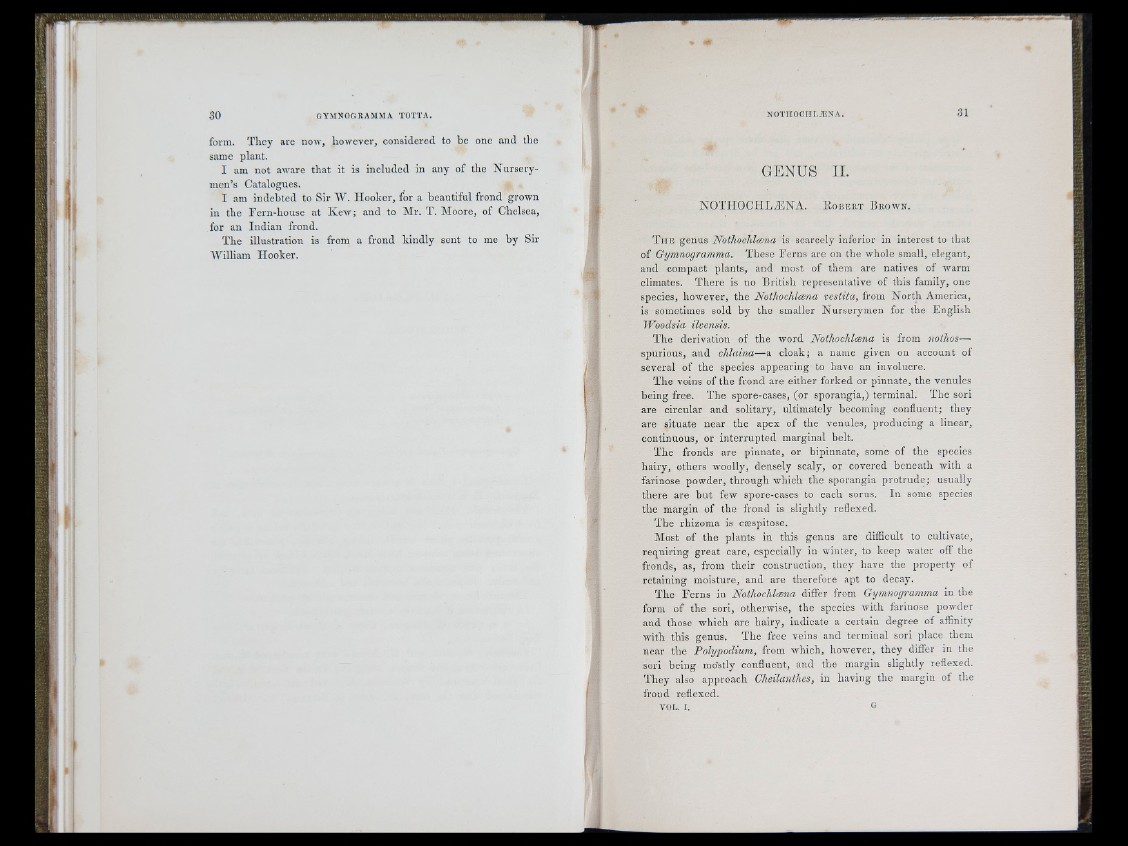
31
if
n
I Í
Ü!
• 1
l u i
form. T hey are now, however, considered to be one and tlio
same plant.
I am not aware th a t it is inclu d ed in any of the N u rs e ry men’s
Catalogues.
I am indeb ted to Sir W . Hooker, for a beautiful frond grown
in the Fcrn-house at K ew ; and to !Mr. T. Moore, of Chelsea,
for an In d ian frond.
T h e illustration is from a frond kindly sent to me b y Sir
AVilliam Hooker.
GENUS II.
N O T H O C I IL iE N A . R o h e r t B r o w n .
T h e genus Nothochlccna is scarcely inferior in in te re st to that
of Oymnogramma. These F e rn s are on the whole small, elegant,
and compact plants, and most of them are natives of warm
climates. T h e re is no British representative of this family, one
species, however, the Nothocldwna vestita, from N o rth America,
is sometimes sold by the smaller Nurserymen for the E nglish
IVoodsia iloensis.
T h e derivation of the word Nothocldcena is from jiothos—
spurious, and cldaina—a cloak; a name given on account of
several of the species appearing to have an involucre.
T h e veins of the frond are either forked or pinnate, the venules
b eing free. The spore-cases, (or sporangia,) terminal. The sori
are circular and solitary, ultimately becoming confluent; they
are situate near the apex of the venules, producing a linear,
continuous, or in te rru p ted marginal belt.
T h e fronds are pinnate, or hipinnate, some of the species
ha iry , others woolly, densely scaly, or covered beneath with a
farinose powder, thro u g h which the sporangia p ro tru d e ; usually
there are b u t few spore-cases to each sorus. In some species
the margin of the frond is slightly reflexed.
The rhizoma i s c E E s p i to s e .
Most of the plants in this genus are difficult to cultivate,
req u irin g gre a t care, especially in winter, to keep water off the
fronds, as, from th e ir construction, they have the p roperty of
retaining moisture, and are therefore apt to decay.
T h e Eerns in Nothocldcena differ from Gymnogramma in the
form of the sori, otherwise, the species with farinose powder
and those which are ha iry , indicate a certain degree of affinity
with this genus. T h e free veins and terminal sori place them
near th e Polypodium, from which, however, they differ in the
sori being mo'stly confluent, and the margin slightly reflexed.
T hey also approach Cheilanthes, in having the margin ol tlic
froud rellcxcd.
VOL, I. G